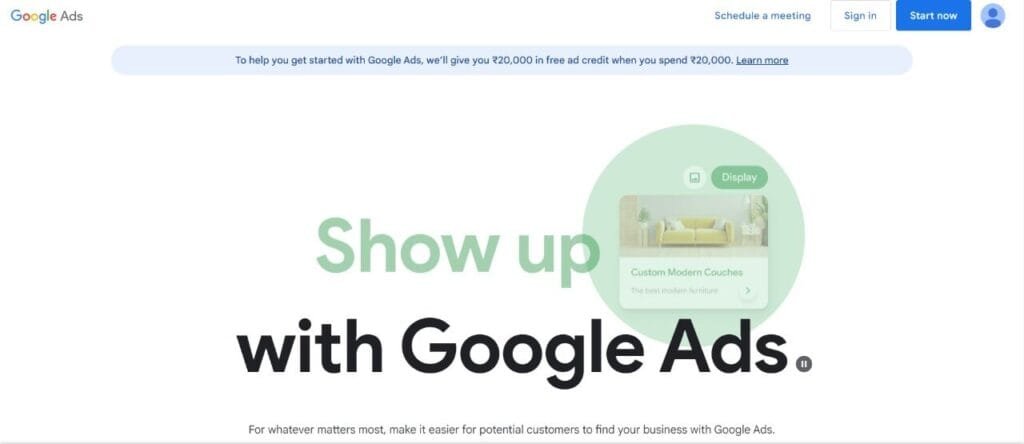This Article has been revised, edited and added to, by Poulomi Chakraborty.
- The Rise of Voice Search Keywords
- Visual Search and SEO Keywords
- Predictive Search and Anticipatory Keywords
- Mobile-First Indexing and Keyword Strategy
- The Integration of AI and SEO Keywords
- The Emergence of Video Content in Keyword Strategies
- Zero-Click Searches and Featured Snippets
- Conclusion: Navigating the Future of SEO Keyword Trends for Startups
Search engines, the digital gatekeepers of information, are in a state of perpetual evolution. As algorithms get smarter and user behaviors shift, the realm of SEO becomes increasingly dynamic. Startups, in their quest to capture market share and establish digital dominance, often find themselves at the forefront of these changes. For them, understanding not just current SEO practices but predicting future trends becomes imperative.
Enter the world of SEO keyword trends. As we peer into the crystal ball, trying to decipher the contours of future search behavior, certain patterns emerge. This article aims to unpack these patterns, offering startups a glimpse into the future of SEO keyword trends and, more importantly, guidance on how to prepare for it.
The Rise of Voice Search Keywords

As we delve deeper into the realm of digital marketing, one cannot overlook the seismic shift towards voice search. This change is not just about technology evolving; it’s about how people are choosing to interact with their devices. For startups, particularly, adapting to this trend is not just an option but a necessity for staying relevant and competitive.
Voice search fundamentally differs from traditional typing because it’s conversational. People speak more naturally and in complete sentences. This shift means that the keywords you target need to reflect this change. For example, while someone might type “weather NYC,” a voice search would likely be “What’s the weather like in New York City today?” This subtle difference can significantly impact your SEO strategy.
Strategic Implementation for Startups
To harness the power of voice search, startups need to rethink their SEO strategies from the ground up. The first step is understanding the ‘intent’ behind voice searches. Typically, these queries are more direct and often seek specific information or actions. This understanding should be the cornerstone of your content strategy.
Content that Converses
Craft content that answers questions directly. Consider the typical queries that might lead someone to your product or service. If you’re a meal delivery service, anticipate questions like, “What are the best meal delivery services available today?” or “How do I get healthy dinners delivered to my home?” Then, structure your content to answer these queries succinctly and clearly.
Local SEO: A Crucial Angle
Voice search is heavily skewed towards local queries. People often look for services and products in their immediate vicinity. Therefore, make sure your business is optimized for local SEO. Include region-specific keywords in your metadata, and make sure your business is listed accurately on Google Maps and other directories.
Technical Tweaks for Voice Search Optimization
On the technical side, ensure your website is fast and mobile-friendly. Voice search is primarily used on mobile devices, and a slow-loading site can hurt your rankings. Use structured data to help search engines understand and index your content more effectively. Schema markup for local businesses, events, and products can dramatically improve how you appear in search results.
Conversational Keywords: A Deeper Dive
Start by building a keyword strategy that prioritizes long-tail keywords and phrases. These are more specific and often less competitive, which is perfect for a startup trying to carve out a niche. Use tools like Google’s Keyword Planner or Answer the Public to find out what people are asking around your topics. Then, craft your content to answer these questions.
Engaging and Retaining Your Audience
With the right keywords and technical setup, you’re on your way to capturing voice searches, but how do you keep users engaged? The key is in the delivery of your content. Your tone should be conversational yet informative. Don’t shy away from injecting personality into your writing. People should feel they are being spoken to directly.
Continuous Learning and Adaptation
Voice search technology and user behavior are constantly evolving. Implement regular audits of your voice search strategy. Analyze what queries are bringing people to your site and how well your content satisfies these queries. Use tools like Google Analytics and SEMrush to track performance and make adjustments as needed.
Embracing the Future
For startups, integrating voice search into your SEO strategy is not just about keeping up with trends; it’s about setting the stage for future growth. As voice technology becomes more sophisticated, your ability to adapt and innovate will be crucial.
By focusing on conversational keywords, enhancing local SEO, and ensuring your site is technically sound, you position your startup to thrive in the evolving digital landscape. Remember, the goal is to make it easy for users to find and engage with your content, making their experience seamless and rewarding.
Visual Search and SEO Keywords
In the ever-evolving landscape of digital marketing, visual search technology has become a game-changer, particularly for e-commerce and retail startups. Visual search allows users to search for products using images instead of words. This shift presents a unique opportunity for startups to optimize their online presence by integrating visual elements with traditional SEO tactics. It’s not just about seeing; it’s about connecting and discovering through visuals.
Integrating Visual Search into Your SEO Strategy
To leverage visual search, startups must first understand its fundamentals. Visual search uses machine learning to understand the content and context of images and provides users with results that are visually similar or related. This means that your images are not just decorations but are now core to your discovery process.
Optimize Your Images for SEO
Start by ensuring that all images on your site are high quality and relevant. Each image should be optimized for SEO, which includes proper file names, alt text, and surrounding content that describes the image. For example, if you’re selling bicycles, instead of naming an image “IMG_001.jpg,” name it “city-bike-2021-model.jpg,” and use an alt text that describes the image as “City Bike 2021 Model in Matte Black.”
Create Image-Rich Content
To make the most of visual search, incorporate image-rich content that complements your text. This could be through blogs that use infographics, how-to guides with step-by-step images, or product pages that showcase high-quality images from multiple angles. Each image provides a new entry point for potential customers using visual search tools.
Building a Visual Search-Friendly Website
Your website’s structure can enhance how effectively it interacts with visual search technologies. Use clean, organized layouts that highlight images. Ensure your site’s mobile version is optimized since many visual searches occur on mobile devices. Furthermore, adopting technologies like image sitemaps can make it easier for search engines to find and index your images.
Metadata Matters
While images themselves are key, the metadata associated with these images can make a significant difference. This includes not only the alt text and file names but also structured data that helps to classify the image contextually. Implementing schema markup for your images can provide search engines with additional details like price, availability, and reviews, making them more attractive in search results.
Leveraging Visual Search Platforms
Several platforms dominate the visual search landscape, including Google Lens, Pinterest Lens, and Bing Visual Search. Each platform has nuances in how it interprets images, so understanding these can help tailor your approach. For instance, Pinterest is widely used for inspiration, from home decor to fashion. Optimizing for Pinterest means engaging visuals that stand out and tell a story.
Engage with Visual Social Media
Social media platforms like Instagram and Pinterest are inherently visual and can significantly boost your visual search visibility. Regularly update your profiles with high-quality images that link back to your website, and use hashtags strategically to increase the reach of your posts.
Continuous Monitoring and Adaptation
As with any SEO strategy, the key to success with visual search is continuous monitoring and adaptation. Use analytics to track how your images are performing in search results and how they contribute to your site traffic. This data will help you refine your strategy and make informed decisions about the types of images and content that resonate best with your audience.
Predictive Search and Anticipatory Keywords

Predictive search is transforming how startups approach SEO by enabling more proactive interactions with users. This technology uses past search data, user behavior, and AI algorithms to predict what a user might be searching for before they even finish typing. For startups, this means an opportunity to influence potential customers’ search experiences by anticipating their needs and intentions.
Strategically Incorporating Predictive Search
To effectively integrate predictive search into your SEO strategy, you must first understand the user journey. Each interaction with your website provides insights into what your customers might need next. Predictive search is not just about responding to direct queries but about anticipating the next questions that might arise.
Analyze User Behavior
Start by analyzing how users interact with your site. Which pages do they visit? What products do they linger on? Use analytics tools to track these behaviors and identify patterns. This data can guide the development of anticipatory keywords—terms that you predict will become relevant based on user interaction trends.
Develop a Forward-Looking Keyword Strategy
Anticipatory keywords are at the heart of predictive search. These are not just popular search terms but strategic predictions of future queries based on emerging trends, seasonal events, or new product launches. For example, if you’re a tech startup and planning to release a new product in a few months, incorporate keywords related to its anticipated features and benefits ahead of time.
Creating Content for Predictive Search
Your content should cater to both current and future needs. This proactive approach not only enhances user experience but also positions your startup as a thought leader in your industry.
Content That Answers Tomorrow’s Questions Today
Create content that addresses not only the immediate questions your users might have but also questions they might ask in the future. For instance, if you sell smart home devices, beyond explaining the current features of your products, you could provide insights into how these devices could integrate with future smart home technology.
Utilize AI and Machine Learning
Leverage AI tools to refine your anticipatory keyword strategy. These tools can analyze vast amounts of data to predict which new products or services are gaining interest or how seasonal changes affect search behaviors. Incorporating these insights into your content and keyword strategy can significantly enhance your visibility.
Technical Optimization for Predictive Search
Ensuring that your website is optimized for predictive search involves more than just keyword placement. It requires a technical setup that supports fast and relevant content delivery.
Enhance Website Performance
A fast-loading website is crucial for predictive search. If your site is suggested in a predictive search result, it must load quickly to capture and retain the user’s interest. Optimize your website’s speed by compressing images, leveraging browser caching, and reducing server response times.
Structured Data and Schema Markup
Use structured data to help search engines better understand the context of your content. This can improve how your content is matched with predictive searches. Implementing schema markup for articles, products, and reviews can provide search engines with detailed information that enhances predictive accuracy.
Continuous Innovation and Adaptation
Predictive search is dynamic, with algorithms constantly evolving. Keep your strategy flexible and adapt to changes by staying informed about the latest in SEO and predictive search technologies. Regularly update your content and keyword strategies based on new data and insights.
Mobile-First Indexing and Keyword Strategy
Mobile-first indexing has become a cornerstone of modern SEO strategy, especially since Google announced that it would prioritize mobile versions of content for indexing and ranking. This paradigm shift reflects the growing dominance of mobile devices in internet usage. For startups, this means that your website’s mobile version isn’t just an option—it’s the primary version that search engines and users will evaluate.
Crafting a Mobile-Oriented Keyword Strategy
To thrive in a mobile-first world, startups need to align their keyword strategies with the behaviors and preferences of mobile users. Mobile searches often differ from desktop searches in terms of intent, length, and specificity.
Understand Mobile User Intent
Mobile users typically search with different intent compared to desktop users. They often look for quick answers, local services, or immediate solutions. This means prioritizing keywords that cater to these immediate, location-based, and problem-solving queries. For example, a user might search for “coffee shops near me open now” rather than simply “coffee shops.”
Shorter Keywords and Voice Search Integration
Because typing on mobile can be cumbersome, mobile users tend to use shorter keywords or phrases. Additionally, the rise of voice search (as discussed in previous sections) plays a crucial role in shaping mobile search queries, which are often longer and more conversational. A strategic approach is to balance both short, direct keywords and longer, conversational phrases that might be spoken during a voice search.
Optimizing Content for Mobile Users
Optimizing for mobile goes beyond just making sure your site is responsive. It involves structuring content in a way that is accessible and engaging for mobile users, who typically scan content quickly.
Mobile-Friendly Content Formatting
Structure your content to cater to the mobile experience. Use short paragraphs, clear headings, and bullet points to make information easily digestible. Include engaging elements like images and videos that are optimized for quick loading and formatted to display well on mobile devices.
Fast Loading Times Are Crucial
Mobile users expect quick access to information. Enhance your website’s speed by optimizing images, leveraging browser caching, and minimizing code. Google’s PageSpeed Insights can provide specific recommendations to improve your site’s loading time on mobile devices.
Technical Considerations for Mobile-First Indexing
Ensuring your website adheres to mobile-first principles from a technical perspective is essential. This includes both backend and frontend optimizations.
Responsive Design
Adopt a responsive web design that adjusts content seamlessly to fit different screen sizes and orientations. This not only improves user experience but also aligns with Google’s mobile-first indexing requirements.
Mobile SEO Best Practices
Implement mobile SEO best practices such as using viewport meta tags to control layout on mobile browsers, avoiding software like Flash that is not common on mobile devices, and ensuring that important, clickable elements are not too close together.
Monitoring and Adapting to Mobile Trends
Keep a close eye on how your mobile site performs both in user engagement and in search rankings. Tools like Google Analytics can help you track mobile traffic, engagement metrics, and conversion rates. Adjust your strategies based on these insights to continuously improve your mobile site’s effectiveness.
The Integration of AI and SEO Keywords

Artificial Intelligence (AI) is revolutionizing the SEO landscape by providing new ways to optimize websites, content, and keywords. For startups, integrating AI into your SEO strategy can be a game-changer, enabling you to analyze vast amounts of data, predict trends, and personalize content in ways that were previously unimaginable.
AI-Driven Keyword Research and Optimization
AI tools can process and analyze data at a scale that is not humanly possible, uncovering patterns and insights that can refine your keyword strategy.
Predictive Keyword Analysis
AI can identify emerging trends and predict shifts in consumer behavior by analyzing search data, social media trends, and even competitor activity. This predictive capability allows startups to stay ahead of the curve by incorporating trending keywords into their content before they become mainstream.
Enhanced Long-Tail Keyword Discovery
Long-tail keywords are more specific and often less competitive than more common keywords. AI can help identify these niche keywords based on search intent and relevance to your business. By targeting these, you can attract highly targeted traffic that is more likely to convert.
Content Creation and Optimization with AI
AI doesn’t just stop at keyword research; it extends into content creation and optimization, enabling more dynamic and responsive SEO strategies.
AI-Generated Content
AI tools can help generate content ideas or even draft content that is optimized for SEO. These tools can ensure that the content not only includes the right keywords but is also structured and styled in a way that is engaging for readers and ranked favorably by search engines.
Real-Time Content Optimization
AI can analyze how users interact with content in real-time and suggest optimizations to improve engagement or SEO performance. This could include changes to the content itself, its layout, or even the user interface of the webpage.
Personalization at Scale
One of AI’s most significant impacts in the SEO world is the ability to personalize content at scale. Personalized content can significantly improve user engagement and satisfaction, which are key factors in SEO rankings.
User Intent and Behavior
AI can segment audiences based on their search behaviors, enabling you to create more targeted content that addresses specific needs or interests. This level of personalization can make your content more relevant and engaging, thereby increasing its effectiveness.
Dynamic Content Adjustment
AI can adjust content dynamically based on user interactions. If certain content performs well for a particular segment, AI can display similar content more frequently to similar users, thus enhancing the user experience and boosting SEO.
Ethical Considerations and SEO
While AI presents numerous opportunities for enhancing SEO, it also brings challenges, particularly in terms of ethics and data privacy.
Ethical AI Use
Ensure that the AI tools you use are transparent about how they collect and use data. It’s important to maintain user trust by using AI ethically, especially as search engines and users increasingly value privacy and ethical behavior.
Compliance with SEO Standards
AI should be used to enhance user-focused optimization, not to manipulate search engine algorithms. Prioritize creating valuable, high-quality content that serves your audience’s needs, following SEO best practices to ensure your strategies remain effective and ethical.

Related: Check out our free SEO suite

The Emergence of Video Content in Keyword Strategies
Video content has surged in popularity and influence, becoming an essential element of modern SEO strategies. For startups, incorporating video not only boosts engagement but also significantly impacts search rankings. As search engines increasingly prioritize video content in their algorithms, understanding how to integrate video effectively into your SEO plan is crucial.
Integrating Video with SEO Keywords
Video content offers a dynamic way to present information and engage users. However, simply creating videos isn’t enough. Strategic incorporation of SEO keywords into your video content can elevate its visibility and effectiveness.
Keyword Optimization in Video Titles and Descriptions
Start with the basics: ensure your video titles and descriptions are optimized with relevant keywords. These elements are crucial because they’re often what search engines index first. For instance, a startup specializing in sustainable packaging might use titles like “Innovative Sustainable Packaging Solutions Explained” or “Why Choose Eco-Friendly Packaging?” Each title includes strategic keywords that potential customers might use when searching for sustainable packaging options.
Tags and Metadata
Beyond titles and descriptions, video tags and metadata play a significant role in SEO. Include a variety of relevant keywords as tags to help your video appear in more searches. Metadata, including closed captions and transcripts, not only makes your video more accessible to a broader audience but also provides additional content for indexing by search engines.
Leveraging Video Platforms for SEO
YouTube is the second largest search engine in the world and a primary platform for video SEO. Optimizing your video content on YouTube can have a substantial impact on your overall SEO performance.
YouTube-Specific SEO Strategies
Utilize YouTube’s channel and video optimization features. Create compelling and keyword-rich channel descriptions, organize your videos into playlists with descriptive, keyword-focused titles, and use YouTube’s end screen and card features to direct viewers to other videos, playlists, or websites. These tactics help retain viewers and increase the time they spend interacting with your content, which is a positive signal to search engines.
Content Creation Strategies for Video
Creating video content that resonates with your audience and enhances your SEO efforts involves more than just technical optimization. The content itself must be engaging and valuable.
Focus on Quality and Relevance
Ensure that your videos are high-quality and directly relevant to the interests of your audience. High engagement rates (like watch time, likes, and comments) can signal to search engines that your content is valuable, thereby improving your rankings. Additionally, addressing common questions or topics in your industry can make your videos more likely to be featured as the answer in video snippets on search engine results pages.
Incorporate Videos into Comprehensive Content Campaigns
Don’t isolate your video content. Integrate it within your broader content strategy. Embed videos into relevant blog posts or articles, share them on your social media platforms, and include them in your email marketing campaigns. This integration not only boosts your video views but also enhances the overall engagement and reach of your content across platforms.
Measuring Video SEO Success
Tracking the performance of your video content is essential to understand its impact on your SEO and refine your strategies accordingly.
Analytics and Performance Metrics
Use analytics tools provided by platforms like YouTube and Google Analytics to track how viewers find your videos, how long they watch them, and how they interact with them. Metrics such as click-through rates from search results to your video and conversion rates from video views to website visits are crucial for evaluating the effectiveness of your video SEO strategies.
Zero-Click Searches and Featured Snippets

Zero-click searches, where the user’s query is answered directly on the search engine results page (SERP), have become increasingly common. This trend is largely driven by the rise of featured snippets, knowledge panels, and other Google SERP features designed to quickly provide the answers users are seeking. For startups, understanding how to effectively target these features is crucial as they often represent the first (and sometimes only) interaction a user might have with your content.
Optimizing for Featured Snippets
Featured snippets are selected search results that are featured on top of Google’s organic results below the ads in a box. They aim to answer the user’s question right away (hence “zero-click”) and can drive significant traffic to your site if your content is featured.
Types of Featured Snippets
Understanding the types of featured snippets can help you tailor your content to be more snippet-friendly:
- Paragraph snippets: Provide answers in a text block.
- List snippets: Show content organized as a bullet or numbered list.
- Table snippets: Display data in a tabular format.
Strategies for Winning Featured Snippets
To increase your chances of securing a featured snippet, structure your content to directly answer questions related to your keywords. Here are some strategic approaches:
1. Answer Specific Questions
Identify common questions in your niche and structure your content to answer these questions concisely at the beginning of your articles. Tools like “Answer the Public” can help you find popular questions.
2. Use Clear, Structured Formatting
Organize your content with clear headings (using H2, H3 tags, etc.) and include lists, tables, and bullet points to make your content easily digestible by search algorithms.
3. Optimize Your Page Titles and Headers
Incorporate question-based keywords into your page titles and headers to align with the queries that trigger featured snippets.
The Impact of Zero-Click Searches on Traffic
While zero-click searches can enhance visibility, they don’t always translate to clicks through to your website. This makes it vital to strategically position your brand within these searches.
Branding in SERPs
Even if users don’t click through, seeing your brand name and the direct answer can enhance brand recognition and authority. Make sure your answers include branded elements where relevant, and structure information in a way that entices users to learn more by visiting your website.
Providing Partial Answers
Consider providing compelling partial answers that pique curiosity and lead the user to click through to your website for more detailed information.
Leveraging Knowledge Panels and Other SERP Features
Besides featured snippets, other SERP features like knowledge panels can also influence zero-click searches. These panels often pull data directly from structured data on your website, external databases, or Google My Business listings.
Enhance Your Online Presence
Ensure that your Google My Business listing is up-to-date, and optimize your website’s structured data to improve your chances of appearing in these panels. This is especially important for local SEO, where visibility in local panels can drive foot traffic to brick-and-mortar locations.
Monitoring and Adapting to SERP Changes
Search engines frequently update their algorithms and the way they display information. Continuous monitoring of how your content performs in SERPs is crucial. Use tools like Google Search Console to track changes in how your content appears and perform A/B tests to refine the effectiveness of your snippet targeting.
Conclusion: Navigating the Future of SEO Keyword Trends for Startups
As we look towards the horizon of digital search, it’s evident that the landscape is both exciting and challenging. Startups, with their inherent agility and innovative spirit, are well-poised to navigate these evolving terrains. But to truly harness the power of future search behaviors, understanding and anticipation are crucial. It’s not just about reacting to shifts but proactively shaping strategies to be a step ahead.
From the surge in voice and visual searches to the ethical concerns of modern consumers, from the marvels of AR to the deep dives of AI, the future of SEO keywords is multi-dimensional. Each trend, while presenting opportunities, also demands a nuanced understanding and approach.
For startups, the journey is clear: Continuous learning, genuine engagement with their audience, ethical commitments, and a blend of data-driven insights with creative intuition. The world of SEO is no longer just about algorithms and rankings; it’s about crafting meaningful connections, delivering value, and staying relevant in a fast-changing digital realm.
In wrapping up, startups embarking on their SEO journey should view it as a dynamic dance. The steps might change, new rhythms might emerge, but the essence remains the same—staying connected with the audience, understanding their needs, and delivering value with every keyword chosen. As the curtain rises on tomorrow’s SEO trends, startups equipped with knowledge, adaptability, and user-centricity will undoubtedly lead the performance.
Read Next:
- Long-Tail Keyword Strategy for Startup SEO ROI
- Aligning Startup SEO Budget with Business Objectives
- Startup SEO ROI: Analyzing Customer Lifetime Value Impact
- Budgeting for Startup SEO Tools: Maximizing ROI
- Proving Startup SEO ROI to Stakeholders: Reporting Strategies




















Comments are closed.